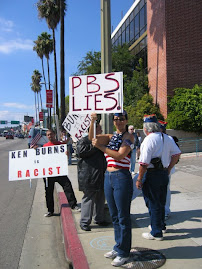
I received a holiday card this year with a special surprise from Sylvia Mendez. It was a U.S. Postal Service stamp commemorating the precedent-setting Mendez et al. v. Westminster School District of Orange County et al. (1946). As a graduate student in the early 1990s, I had the privilege of interviewing Sylvia and her mother, Felicitas, in their Fullerton home. Felicitas and her husband, Gonzalo, were the lead plaintiffs in a suit challenging their children's segregation in "Mexican schools."
The case demonstrated that systematic discrimination in the United States was not limited to African-Americans in the South but also targeted blacks, Asian Americans and Chicanos throughout the Southwest.
The Mendez decision held that separate-but-equal practices violated the constitutional rights of Chicano schoolchildren. Thurgood Marshall, lawyer for the NAACP and future U.S. Supreme Court justice, filed an amicus brief on behalf of the Mendez plaintiffs. The following year, the Ninth Circuit Court of Appeals affirmed the decision, but school boards throughout the state resisted desegregation remedies for decades.
In 1954, when Marshall successfully challenged the separate-but-equal doctrine as it applied to African-American children in the landmark Brown vs. Board of Education, he cited the Mendez ruling.
Studying the Mendez case led me to wonder about historically high dropout rates among Chicanos. Over the years, I've asked Chicano parents, grandparents and great-grandparents throughout Ventura County about their schooling. The elders I spoke with described Mexican schools in Ventura, Santa Paula and Fillmore that were both separate from, and unequal to, those attended by white children.
And where budgets precluded the creation of Mexican schools, districts established segregated spaces within the schools. At the Woodrow Wilson School in Oxnard, for example, officials physically separated students of African, Asian and Mexican ancestry from their white peers, both in the classrooms and the playground. One person I interviewed said that Chicano children often relieved themselves behind trees because the nearest restroom was on the side of the playground designated for white students.
The same senior citizens also recalled the corporal punishment meted out to children who spoke Spanish at school. One Fullerton College counselor lamented the tight-lipped confusion he and his classmates endured. Unable to answer his teachers in English, and prohibited from speaking Spanish, he mostly remained silent while attending a Mexican school in Orange County. Chicano students who survived elementary and middle school were often tracked away from college preparatory courses and toward vocational and home economic classes.
Alienated and marginalized, 50 percent of Chicano youths dropped out — some contend they were pushed out — and then had to overcome educational handicaps to compete in the job market.
Southern California school districts weren't always quick to implement school desegregation. Before the Mendez and Brown decisions, Oxnard built neighborhood elementary schools (Juanita and Ramona) yards away from each other to prevent Chicano children of La Colonia from venturing outside their barrio for their education. In 1974, almost three decades after Mendez, U.S. District Court Judge Harry Pregerson used, in Debbie and Doreen Soria et al., Plaintiffs, v. Oxnard School District Board of Trustees, school board minutes from 1934 to show the "explicit intent to racially segregate its elementary school students." He ordered the Oxnard School District to implement a desegregation plan.
Desegregation was usually slow when it came at all, and recent studies show that American communities — and schools — are resegregating rapidly. The Mendez case reminds us that the problems of social equity now facing our children may be complex, but they're not wholly unprecedented. Income based on the education that persons received in previous generations now plays a large role in determining what neighborhoods their progeny live and where they send or do not send their children to school. This is the new face of segregation. If there is one thing that history reminds us it is that the struggle for social justice continues. Thank you for the stamp, Sylvia Mendez.
fpb
Ventura County Star

4 comments:
Glad to see that the Star picked this up, Frank. I also see that some readers left comment on its website ... interesting. Hope to see you next week.
I meant comments, lol. Get me an editor before I strike again!
Great article. I would like to point out that in 1975,in the third grade, I was bussed from North Oxnard to Ramona, even though Sierra Linda was only blocks from my home. When we lived in West Oxnard, I was then bussed to Rose Avenue. Neither experience was good, because of the anger of the Chicano kids and gang activity at that early age; however, I'm still glad for the experience.
Hi it me Debbie Soria I'm glad to have took part in changing the school rules it was hard to be latina in oxnard in the 1970 we got teated bad and we had no buses to ride on to and from school we still need to change some more stuff in our schools but it a start i hope someone pick up we we left off at good luck Debbie Soria
Post a Comment